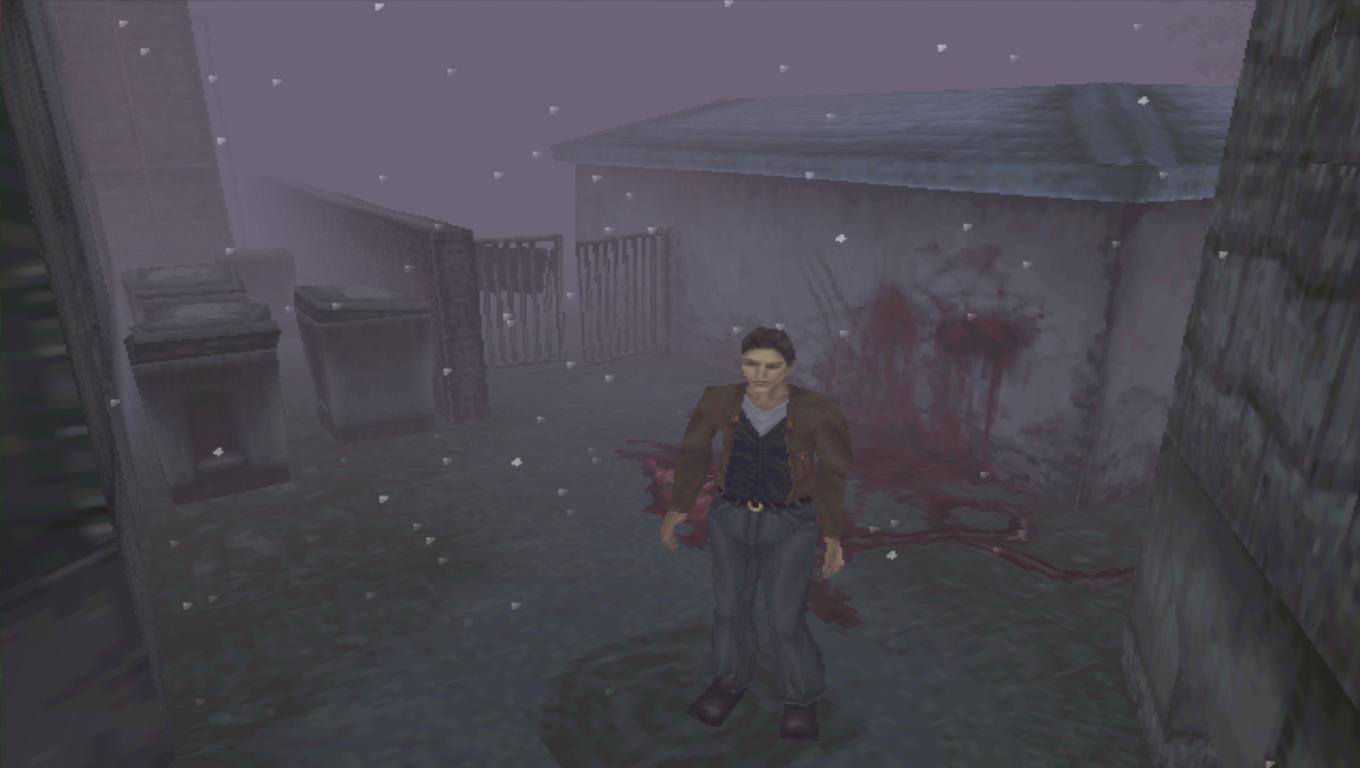| The Hardware used in the Playsation [2] DAVID LEVERTON (2009) Hardware of the Playstation 1 [Online Image] Available from: http://davidleverton.wordpress.com/category/console-development/ [Accessed 13/04/14] |
What I’ve really been preparing for is talking about the graphical side to the Playstation. I grew up with the Playstation, being one of the first consoles I played as a child, with many fond memories of playing these games. To this day I’ll still play them, having to deal with their now outdated graphics and clunky controls. Maybe I’m nostalgic, but I feel I can appreciate these earlier games and how they became a foundation for the games we enjoy now.
As the Playstation had a limited processing power, game designers and art designers had to come up with ingenious ways to lower the processing power or use the technical limitations of the console to their advantage.
Even with these hardware advancements, Game designers and Art designers found ingenious ways to lower the processing power or use it's technical limitations of the console to their advantage. I'm starting this topic with Crash Bandicoot.
| The early concept of Crash Bandicoot, Willie the Wombat [4] CHARLES ZEBILLAS, NAUGHTY DOG (1994) Early Concept of Crash Bandicoot [Online Image] Available from: http://upload.wikimedia.org/wikipedia/en/7/7a/Willy_wombat.jpg [Accessed 13/04/14] |
| Jill Valentine from Resident Evil featuring the usage of Pre-rendered Environments. [6] CAPCOM (1996) Resident Evil, Playstation 1 screenshot of Jill Valentine in the Dining Area of the Mansion [Online Image] Available from: http://img535.imageshack.us/img535/2983/ss5cn.jpg [Accessed 13/04/14] |
| One of Spyro's ingame world, using the Panoramic engine which makes use of Level of detail renders. [7] INSOMNIAC GAMES (1998) One of the Worlds in Spyro. Available from: http://www.gamasutra.com/features/20000502/spyro_07.gif [Accessed 13/04/2014] |
 |
| Harry Mason from Silent Hill helping to show the draw distance of the game via the fog. [8] KONAMI (1999) Harry Mason and Draw distance [Online Image] Available from: https://warosu.org/data/vr/img/0013/34/1389901877596.jpg [Accessed 13/04/13] |
All of these techniques allowed for the processing power to be maximised giving the player more content on screen creating full and interesting environments for that time. The only problem now is that the pre-rendered backgrounds now look outdated, as well as the lack of control of the camera which we are used to now mixed in with the game controls made the game feel clunky nowadays.
From looking at Playstation games, I’ve noticed there is a dramatic split in the art styles at this generation. Half of the games were very stylised allowing for polygons to be saved and creating almost mascot-like characters for the platform, such as Spyro and Crash. While the other half battled with the 3D realism, a long way from the sprites of the NES and SNES age. The realistic games often used the pre-rendered background which can be seen in games such as Resident Evil. All of these elements I looked at in the earlier games were all done using the limitations of the console to their advantage or find ways of limited the processing power to areas where it wasn’t needed, something I personally feel we should look back on and implement in more recent games.
Pre-rendered background now could be used in isometric view port games with a fixed camera, such as Dungeon Crawlers like the Diablo franchise and the upcoming isometric RPGs suchlike Divinity: Original sin. One game currently in development using this technique is Pillars of Eternity. Their backgrounds look stunning, much like the Resident Evil Remake backgrounds. They do suffer with issues of lighting effects which will always make the background and the figures look off to one another. I feel with more experimentation into this field we can minimise the lightning issues and maximise background animation to allow the models and environment to blend in more as I feel Pillars of Eternity have achieve in their game.
| A Pre-rendered Background appearing in Pillars of Eternity. [9] OBSIDIAN (2013) One of the Pre-rednered Backgrounds in Pillars of Eternity [Online Image] Avaliable from: http://media.pcgamer.com/files/2012/10/Project-Eternity.jpg [Accessed 13/04/14] |
Bibliography
[1] - IGN STAFF (1998) History of the Playstaion [Online] Available from: http://uk.ign.com/articles/1998/08/28/history-of-the-playstation [Accessed 13/04/2014]
[2] - DAVID LEVERTON (2009) Hardware of the Playstation 1 [Online Image] Available from: http://davidleverton.wordpress.com/category/console-development/ [Accessed 13/04/14]
[2] - DAVID LEVERTON (2009) Hardware of the Playstation 1 [Online Image] Available from: http://davidleverton.wordpress.com/category/console-development/ [Accessed 13/04/14]
[3] - JEFF TYSON (????) How Playstation Work [Online] Avaliable from http://electronics.howstuffworks.com/playstation2.htm [Accessed 13/04/2014]
[4] - CHARLES ZEBILLAS, NAUGHTY DOG (1994) Early Concept of Crash Bandicoot [Online Image] Available from: http://upload.wikimedia.org/wikipedia/en/7/7a/Willy_wombat.jpg [Accessed 13/04/14]
[5] - DYK GAMING (2013)Crash Bandicoot - Did You Know Gaming? Feat. Caddicarus [Online video] Available from: https://www.youtube.com/watch?v=NaLgYPn_Fqs [Accessed 13/04/2014]
[6] - CAPCOM (1996) Resident Evil Playstation 1 screenshot of Jill Valentine in the Dining Area of the Mansion [Online Image] Available from: http://img535.imageshack.us/img535/2983/ss5cn.jpg [Accessed 13/04/14]
[7] INSOMNIAC GAMES (1998) One of the Worlds in Spyro. Available from: http://www.gamasutra.com/features/20000502/spyro_07.gif [Accessed 13/04/2014]
[8] KONAMI (1999) Harry Mason and Draw distance [Online Image] Available from: https://warosu.org/data/vr/img/0013/34/1389901877596.jpg [Accessed 13/04/13]
[9] - OBSIDIAN (2013) One of the Pre-rendered Backgrounds in Pillars of Eternity [Online Image] Avaliable from: http://media.pcgamer.com/files/2012/10/Project-Eternity.jpg [Accessed 13/04/14]
[4] - CHARLES ZEBILLAS, NAUGHTY DOG (1994) Early Concept of Crash Bandicoot [Online Image] Available from: http://upload.wikimedia.org/wikipedia/en/7/7a/Willy_wombat.jpg [Accessed 13/04/14]
[5] - DYK GAMING (2013)Crash Bandicoot - Did You Know Gaming? Feat. Caddicarus [Online video] Available from: https://www.youtube.com/watch?v=NaLgYPn_Fqs [Accessed 13/04/2014]
[6] - CAPCOM (1996) Resident Evil Playstation 1 screenshot of Jill Valentine in the Dining Area of the Mansion [Online Image] Available from: http://img535.imageshack.us/img535/2983/ss5cn.jpg [Accessed 13/04/14]
[7] INSOMNIAC GAMES (1998) One of the Worlds in Spyro. Available from: http://www.gamasutra.com/features/20000502/spyro_07.gif [Accessed 13/04/2014]
[8] KONAMI (1999) Harry Mason and Draw distance [Online Image] Available from: https://warosu.org/data/vr/img/0013/34/1389901877596.jpg [Accessed 13/04/13]
[9] - OBSIDIAN (2013) One of the Pre-rendered Backgrounds in Pillars of Eternity [Online Image] Avaliable from: http://media.pcgamer.com/files/2012/10/Project-Eternity.jpg [Accessed 13/04/14]

very good job by this blogger, A PlayStation network card, allows you to purchase products and items from online stores of PlayStation which you can freely use if you have a PSN card
ReplyDeletehttp://www.gainfreestuff.com/free-psn-playstation-store-cash-card